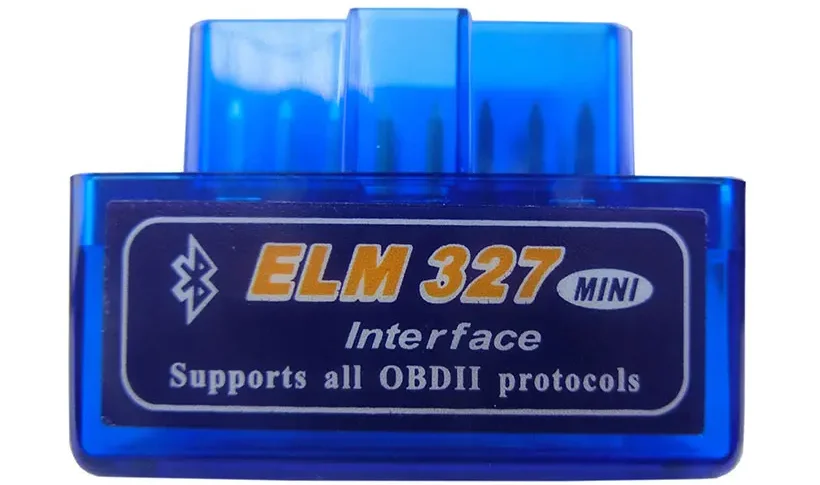When it comes to vehicle diagnostics and maintenance, having the right Onboard Diagnostics (OBD) tester is crucial.
Whether you’re a professional mechanic or a car enthusiast, selecting the best OBD tester for your needs can save both time and money by quickly identifying issues with your vehicle.
In this comprehensive guide, we’ll delve into the key factors to consider when choosing an OBD tester and provide valuable insights to help you make an informed decision.
1. Vehicle Compatibility
The first and most critical consideration when choosing an OBD tester is compatibility. OBD systems come in different versions, with OBD-I and OBD-II being the most common.
Ensure that the tester supports the protocols relevant to your car’s make and model.
2. Diagnostic Capabilities
Different OBD testers come with varying diagnostic capabilities. Basic scanners may only read and clear fault codes, while advanced models offer real-time data monitoring, performance testing, and more.
Consider your specific needs and the level of detail required for diagnostics.

3. Display and Interface
The user interface and display of the OBD tester are crucial for ease of use. Look for a device with a clear and easy-to-read screen, intuitive menus, and user-friendly navigation buttons. Some models come with touchscreens or color displays, enhancing the user experience.
A device with a backlit display is particularly useful in low-light conditions.
4. Connectivity Options
OBD testers typically connect to vehicles using a cable or wirelessly through Bluetooth or Wi-Fi. Wired connections are straightforward but may limit mobility.
Wireless options provide more flexibility, allowing you to move around the vehicle while conducting diagnostics. Consider your preferences and the convenience of connectivity options when making your choice.
5. Software and Updates
The quality of the software that comes with the OBD tester is crucial for accurate diagnostics. Check if the device comes with user-friendly software and if it’s compatible with your operating system.
Additionally, inquire about the availability of regular software updates, ensuring your OBD tester stays current with the latest vehicle models and diagnostic codes.
6. Data Storage and Retrieval
For professionals or those dealing with multiple vehicles, the ability to store and retrieve diagnostic data is valuable.
Choose an OBD tester that has sufficient internal memory or supports external storage options like SD cards.
This feature allows you to save and analyze data over time, aiding in the tracking of vehicle performance and identifying recurring issues.
7. Compatibility with Third-Party Apps
Some OBD testers offer compatibility with third-party apps, expanding their functionality. This can include apps for performance monitoring, fuel efficiency analysis, and more.
If you prefer using specific diagnostic or monitoring apps, ensure that the OBD tester supports the relevant protocols and can seamlessly integrate with your chosen applications.
8. Build Quality and Durability
Consider the build quality and durability of the OBD tester, especially if you anticipate frequent use or use in challenging environments.
A rugged and well-constructed device is more likely to withstand the rigors of automotive diagnostics and offer long-lasting performance.
Should I buy a cheap OBD scanner if I am just interested in basic codes?
OBD scanners come in various price ranges, from budget-friendly options to more advanced and expensive models. If your objective is solely to access basic trouble codes, a cheap OBD scanner may be a suitable choice, provided it meets certain criteria.
Firstly, consider the compatibility of the affordable OBD scanner with your vehicle. While basic code reading functionality is generally standardized across most scanners, it’s essential to ensure that the device supports the specific make and model of your car.
Some cheaper scanners may have limitations in terms of vehicle compatibility, so confirming this aspect is crucial to avoid disappointment.
Another factor to weigh is the ease of use and user interface of the OBD scanner. Inexpensive models may have simpler displays and controls, but they should still provide clear and understandable information.

If the purpose is to diagnose basic issues without delving into advanced features, a straightforward interface might be preferable.
It’s important to note that cheaper OBD scanners may lack additional features and functionalities that come with pricier alternatives, such as real-time data monitoring, advanced diagnostics, ABS diagnosing, or compatibility with smartphone apps.
If your intention is solely to read and clear basic codes without the need for extensive diagnostic capabilities, a more affordable option might align better with your requirements.
Ultimately, the decision to invest in a cheap OBD scanner for basic code reading depends on your specific needs and budget constraints.
If your expectations align with the capabilities of a budget-friendly device and it satisfies the compatibility requirements for your vehicle, opting for a less expensive OBD scanner may be a sensible choice for addressing your basic diagnostic needs.
Should I go for a WiFi / Bluetooth OBD Scanner or a standalone one?
Choosing between a WiFi/Bluetooth OBD scanner and one with its own display depends on your preferences, needs, and the level of convenience you seek. Both types of scanners serve the primary purpose of accessing and interpreting diagnostic information from your vehicle’s onboard computer.
A WiFi/Bluetooth OBD scanner connects to your smartphone or tablet, utilizing the wireless capabilities of these devices.
This option offers flexibility and convenience, allowing you to view real-time data, check trouble codes, and access various features through dedicated apps.
This type of scanner is advantageous for users who are comfortable using their smartphones for vehicle diagnostics and appreciate the ability to easily update software or access additional features provided by app developers.
On the other hand, OBD scanners with their display offer a more standalone solution. They come equipped with a built-in screen, eliminating the need for external devices like smartphones or tablets.
This can be beneficial if you prefer a dedicated device for vehicle diagnostics or if you want to keep your smartphone free for other tasks. These scanners are generally more straightforward to use and may be preferred by individuals who are not as tech-savvy or those who simply want a hassle-free, all-in-one solution.
Ultimately, the decision between a WiFi/Bluetooth OBD scanner and one with its display depends on your personal preferences, comfort with technology, and whether you prefer the versatility of using your existing devices or the simplicity of a standalone device.
Consider factors such as ease of use, desired features, and the level of integration you want with your existing technology when making your decision.
Final thoughts
Choosing the right OBD tester is a crucial step in maintaining and diagnosing your vehicle effectively.
By considering factors such as compatibility, diagnostic capabilities, display and interface, connectivity options, software and updates, data storage, compatibility with third-party apps, and build quality, you can make an informed decision that aligns with your specific needs.
Remember that investing in a high-quality OBD tester can pay off in the long run by providing accurate and reliable diagnostic information for your vehicle.
